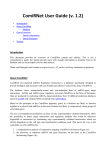Download here - jjwanglab
Transcript
GWAS3D User Manual v1.3 1 / 19 Table of contents Introduction ........................................................................................................................ 3 System Requirements ................................................................................................... 4 Welcome ....................................................................................................................... 4 Features ........................................................................................................................ 4 Create New Run ................................................................................................................ 5 GWAS3D Result Overview ................................................................................................ 8 GWAS3D Result Details .................................................................................................. 11 Download Result .............................................................................................................. 18 Retrieve Jobs ................................................................................................................... 19 2 / 19 Introduction Interpreting noncoding common phenotypically associated variants is an indispensable step to understand molecular mechanism of complex traits (1). The Encyclopedia of DNA Elements (ENCODE) project identified a comprehensive map of functional elements in active chromatin states by advanced techniques such as ChIP-seq, DNase-seq, bisulfate sequencing, chromosome conformation capture, etc (2). Recent work showed that the associated SNPs detected by genome wide association study (GWAS) are significantly enriched in those regulatory regions including many transcriptional factor binding sites (TFBSs), histone modification marked regions, Dnase I hypersensitive sites (DHSs) and expression quantitative trait loci (eQTLs) (3). Also, those regulatory elements can engage in long range looping interactions to exert elaborate gene regulation. Genetic variation in those noncoding regions may affect the function of cis acting elements or distal interactions and finally contribute to complex phenotype (4). Therefore, combinatory analysis of GWAS data and profile of functional elements to capture regulatory variants in a particular disease/trait is needed. GWAS3D (http://jjwanglab.org/gwas3d) systematically compute the probability of genetics variants affecting regulatory pathways and underlying disease/trait associations by integrating chromatin state, functional genomics, sequence motif, and conservation information when given GWAS data or variant list. We first collected and curated genome-wide chromosome conformation (5C, Hi-C, ChIA-PET) data, enhancer/insulator/promoter marks (H3K4me1, H3K27ac, P300, CTCF, DHS) and chromHMM predicted functional elements in 16 different cell types. Using those regulatory regions, we mapped genetic variants to them and evaluated the binding affinity changes of regulatory factors by scanning 73 ENCODE-motifs. Finally, we combined original GWAS signal, risk haplotype, binding affinity significance and conservation information to prioritize the genetic variants. GWAS3D also provided comprehensive annotations and visualizations to help users interpreting the results. Main Functions: 1. 2. 3. 4. Identify the most probable functional variant associated with interested trait in given risk loci; Prioritize the leading variants when given a full list of GWAS result; Evaluate the deleteriousness of genetic variants affecting the gene regulation without any prior-effect; Annotate genetic variant from regulatory perspective. Ward, L.D. and Kellis, M. (2012) Interpreting noncoding genetic variation in complex traits and human disease. Nat Biotechnol, 30, 1095-1106. Dunham, I., Kundaje, A., Aldred, S.F., Collins, P.J., Davis, C.A., Doyle, F., Epstein, C.B., Frietze, S., Harrow, J., Kaul, R. et al. (2012) An integrated encyclopedia of DNA elements in the human genome. Nature, 489, 57-74. Schaub, M.A., Boyle, A.P., Kundaje, A., Batzoglou, S. and Snyder, M. (2012) Linking disease associations with regulatory information in the human genome. Genome Res, 22, 1748-1759. Sanyal, A., Lajoie, B.R., Jain, G. and Dekker, J. (2012) The long-range interaction landscape of gene promoters. Nature, 489, 109-113. 3 / 19 System Requirements GWAS3D is best accessed using the Google Chrome web browser. It has been tested to work with Mozilla Firefox and Safari and Internet Explorer 9. Not all functions are available with Internet Explorer 8, due to a lack of HTML5 support by IE. It don't support the old version of IE under 8. SInce GWAS3D uses many JavaScript features and libraries and will display batch of dataset in one web page, it has some requirements about the hardware configuration. Recommend configuration: two cores CPU and 2G memory. Welcome This document aims to introduce the usage and function of GWAS3D. In order to access the public site, please visit http://jjwanglab.org/gwas3d. Please check the site for the most up-to-date versions of the user manual. Features 1. Detecting regulatory (Non-coding) human genetic variants specially; 2. Wide-spread cell types supporting; 3. Cell type specific chromatin state data including signals of distal interaction, enhancer, promoter, insulator and predicted functional elements etc; 4. 73 ENCODE, TRANSFAC, Jasper motifs of TF families including hundreds of known and novel motifs; 5. Enhanced regulatory variants prioritization; 6. Comprehensive variants annotation; 7. Multiply association/SNV list formats support; 8. Useful user defined parameters, nice visualization and usability. 4 / 19 Create New Run To perform a new run for your GWAS association result or SNV list, please follow: 1. Enter the name of the investigated study. 2. Specify your E-mail Address to retrieve your job, a notification will be sent to your assigned mailbox. 3. Select an input format for GWAS result, GWAS3D currently support four different formats including Plink-like format, VCF-like format, single SNP Id and genomic coordinates. Before association file is inputted, please notice that our system is based on the latest homo species genome assembly version (hg19/GRCh37) and dbSNP 137. The input variants coordinates should be consistent with hg19 (if have). While, the SNP identification is no special restriction about version, we will convert SNPs to dbSNP 137 automatically. It is encouraged to use association data with P-value as input, variant list without association P-value is acceptable. 4. Choose input text or upload a input file. 5. Input data without association P-value or define P-value cutoff. Select if your data is pure SNV list. The P-value cutoff refers to the maximal P-value cutoff, variants with P-value larger than the cutoff will be discarded. Investigated population (HapMap I+II+III) for computing the synthetic association. 5 / 19 6. Select SNP data set and population. HapMap I+II+III 1000 Genomes Pilot 1 7. Define a cutoff for haplotype checking The RSquare value of linkage disequilibrium will be restricted between 0.6 to 1 with leading SNP. 8. Select a investigated cell type. Specify the target cell type related to the GWAS traits or your objective. Please select “without cell type restriction” when you don't make sure the phenotype information or no matched cell type. 9. Select TF motifs used as binding affinity scanning. Support mutiple selection. 6 / 19 10. Only scan know motifs. Only consider the know motifs of selected factors. 11. Define TF binding site P-value. The P-value cutoff of putative TF binding site scanning. Strict setting may reduce the false positive. 12. Define promoter range. The range of promoter region should be restricted between [100, 10000] upstream and [50, 5000] downstream of TSS. 13. Input a user costumed region if wanted. If defined, system only consider the variants in those regions. 14. Define maximal variants and interactions could be displayed in the plotting. After preparing the parameters, please make sure all required information is filled. Then click the "submit" button, the job will be submitting to web server. 7 / 19 GWAS3D Result Overview 1. Circos-style regulatory variants visualization Entering your workspace by clicking the finished job, system will first display a Circos-style graph with some interactive attributes. 1.1 Circos-style plotting for variants visualization displays broad horizontal area genome-widely. Top variants with highest regulatory signals and distal interaction regions are displayed in the outer circle. The genes or genomic locations connected to respective SNVs will be showed in the inner circle. 1.2 Several information can be easily read from the plotting, from the outer to inner, there are significant regulatory variants and distal interaction regions, genes and genomic location, chromosome number and distal interaction indicator line. For example (following figure shown), 8 / 19 GWAS SNP rs9267551 is detected as a significant regulatory variant (a), this variant located on the 5' UTR region of DDAH2 (d) in chromosome 6 (c). One of important regulatory features for this variant, which can be viewed from the plotting, is the region of rs9267551 located has a long-range interaction signal to another locus near VWA7, (b, interactive elements with significant regulatory variant will start with I_) the red line indicated this signal (e) and the intensity of interaction is represented by wideness. 2. GWAS3D signal statistics Right overview panel will summary the GWAS3D result which indicate the number of significant variants detected, the number of variants have been detected having significant TFBS affinities, the number of variants have been detected affecting the long range interaction, the number of variants have direct effect by GWAS leading SNPs and the number of variants have indirect effect by high LD of GWAS leading SNPs. 3. Panel switch 9 / 19 GWAS3D is a one-stop web page, for switching the current panel to GWAS3D details panel, please click the "Go To Variants Details" button (a) or move mouse to the left hovering bar for selection (b) (following figure shown). 10 / 19 GWAS3D Result Details 1. Significant regulatory variants table viewer GWAS3D provides a table showing significant regulatory variants information detecting by GWAS3D algorithm. In this table, only one top variant in a LD block of leading SNV will be reported, but user can check other significant variants on same LD from "LD signal tab" of right information panel. 1.1 Variant information in table Significant variants are sorted by their final P-value (a) and some variants will be highlighted with orange background if [final P-value/original P-value > 10E5) (b). However, some variants can rank at the top area although the final P-value is below than original P-value since those variants are significant enough in GWAS association test. The selected variant will be marked by red background (c). Variant with different GWAS3D signals can be represented by color markers which indicate different function elements or chromatin status (d) including Leading variant, Significant TFBS affinity, distal interaction, promoter region of a gene, putative enhancer region, CTCF binding region, regulatory region annotated by ChromHMM and GERP++ conservation element (e). 1.2 Table operation Table can be searched (a), adjusted entries (b), scrolled (c), paged (d) under user intervention. 11 / 19 2. Significant regulatory variants information panel 6 related information about selected significant variant can be checked from different tabs of right panel including Variant Summary, Binding Affinity, GWAS3D Signals, Genomic Elements, LD Signals and External Browsers. 2.1 Variant summary 2.1.1 General information Report the variant basic information for target SNP such as allele frequency, SNP attributes. 2.1.2 Published GWAS Reference Report the reference or publication if this SNP is reported as significant effect in current GWAS. 2.1.3 LD plot Hapmap LD information of this variant for investigated population. 12 / 19 2.2 Binding Affinity GWAS3D will report the significant binding affinity changes for different alleles of target variant by scanning defined factor motifs on variant locus, top 5 factors will be reported with detailed factor and binding information. For example (following figure shown), a known motif of TF Pou2f2 has a significant binding affinity change between allele T and allele G in the 15th position of that motif. The score and P-value indicate the degree and probability of affinity change, which will be used for GWAS3D prioritization. 13 / 19 2.3 GWAS3D Signals Cell type specific chromatin dynamic data are collected from literature, ENCODE project and other resources, GWAS3D can capture those cell specific signals for investigated variant. 2.3.1 Long Range Interactions (5C,ChIA-PET,Hi-C) Report the long range interactions signals of target variant located, data are curated from literature based on 5C, ChIA-PET and Hi-C techniques. 2.3.2 Gene Promoters (RefGene/User Defined Region) Report the gene promoter signals of target variant located, mapping is based on user defined up/downstream of RefGene TSS. 2.3.3 Enhancers (H3K4me1,H3K27ac,P300,DHS) Report the putative enhancer signals of target variant located, data are collected from ENCODE ChIP-seq of TFs/Histone modification and DNase-Seq (H3K4me1,H3K27ac,P300,DHS). 2.3.4 Insulators (CTCF) Report the putative insulator signals of target variant located, data are collected from ENCODE ChIP-seq of TF (CTCF). 2.3.5 ChromHMM Markers (Promoter,Enhancer,Insulator) Report the putative chromatin markers signals of target variant located, data are predicted by ChromHMM. 2.3.6 Conservation Regions (GERP++ Elements) Report the conservative elements of target variant located, data are predicted by rejected substitution of GERP++. 14 / 19 2.4 Genomic Elements Comprehensive genomic mapping annotations are provided to indicate which functional element connect to target variant. 2.4.1 Reference Gene Gene annotation from NCBI Refseq. 2.4.2 Ensemble Gene Gene annotation from Ensemble. 2.4.3 Known Gene Gene annotation from UCSC. 2.4.4 Small RNA snoRNA and miRNA annotations from UCSC. 2.4.5 MicroRNA Target TargetScan generated miRNA target site predictions. 2.4.6 Long Non-coding RNA Human long non-coding RNA from re-annotated microarray studies. 2.4.7 HapMap eQTL 15 / 19 HapMap eQTL consensus 2.4.8 ENCODE transcripts and functional elements ENCODE gene annotation 2.5 LD Signals First top variant in a LD block of leading SNV will be reported in the table viewer, here user can check other significant variants on same LD. 16 / 19 2.6 External Browser GWAS3D provides some useful external browser for annotating and ranking the genetic variant especially for Non-coding variant. 2.6.1 GWASrap QuickRap Genetic variants representation, annotation and prioritization in the post-GWAS era. Cell Res. 2012 doi: 10.1038/cr.2012.106. 2.6.2 Regulomedb Annotation of functional variation in personal genomes using RegulomeDB. Genome Res. 2012 doi: 10.1101/gr.137323.112. 2.6.3 UCSC ENCODE Browser An integrated encyclopedia of DNA elements in the human genome. Nature. 2012 6;489(7414):57-74. 17 / 19 Download Result All significant information detected by GWAS3D can be downloaded from the "download tab" of GWAS3D PLOT panel User can download the significant variants information (one per LD), all significant variants information and GWAS3D plotting in this tab. The GWAS3D download file contain following information: (CHRPOS/SNP ID/GENOTYPE/LOCUS/FINAL PVALUE/LEAD SNP/LEADSNP PVALUE/RSQUARE/SIGNALS) 18 / 19 Retrieve Jobs There are three ways to retrieve your submit job in GWAS3D. 1. Received by E-mail. Please fill right E-mail address for the notification in the input page. 2. Check from a fixed link. GWAS3D provides a encrypted link for retrieving your job. 3. Check from workspace cookies in client browser. GWAS3D provides a cookies mechanism with your used web browser, it will help you manage all of your submit jobs. 19 / 19



















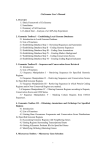


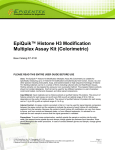
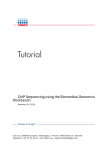
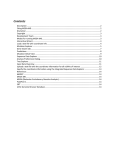
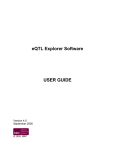
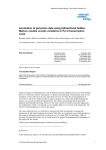
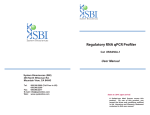

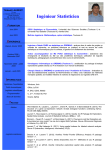
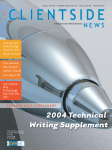
![User`s Manual: SNPStudio_v1.0 [pdf, English]](http://vs1.manualzilla.com/store/data/005994529_1-ff784ef2ce6185976f248556b2f20223-150x150.png)
